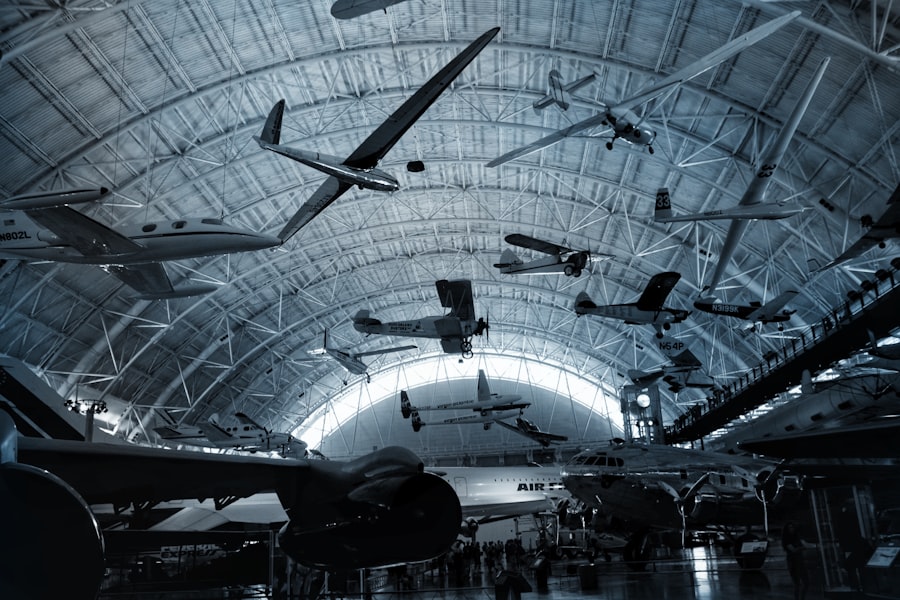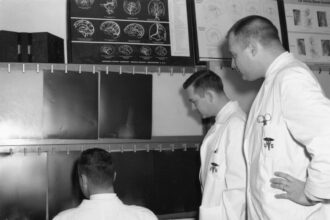The influence of Nazi Germany on modern aviation is a complex and multifaceted topic that intertwines technological advancements with a dark historical narrative. During the 1930s and 1940s, the Nazi regime invested heavily in military aviation, leading to significant developments that would shape the future of flight. This period marked a pivotal moment in aviation history, as the innovations birthed from this era not only transformed military capabilities but also laid the groundwork for advancements in commercial aviation and aerospace technology.
The legacy of these developments continues to resonate in contemporary aviation, prompting discussions about the ethical implications of such advancements. As the world emerged from the shadows of World War II, the technological prowess demonstrated by the Luftwaffe and its associated scientists became a double-edged sword. While the advancements in aviation technology were remarkable, they were also rooted in a regime that perpetrated horrific atrocities.
This article seeks to explore the various dimensions of Nazi influence on modern aviation, examining both the technological innovations and the moral complexities that accompany them. By delving into the rise of the Luftwaffe, the contributions of Nazi scientists, and the lasting impact on aircraft design, one can gain a deeper understanding of how this dark chapter in history has shaped the skies above.
Key Takeaways
- The Nazi influence on modern aviation has had a lasting impact on technology and design.
- The rise of the Luftwaffe and its focus on aviation technology led to significant advancements in aircraft design and performance.
- Nazi scientists played a crucial role in advancing aviation technology, leading to the development of cutting-edge aircraft and propulsion systems.
- The development of jet engines during the Nazi era revolutionized aviation and continues to influence modern aircraft design and performance.
- The legacy of Nazi aviation technology continues to shape commercial and military aircraft development, as well as aerospace research and education.
The Rise of the Luftwaffe and its Impact on Aviation Technology
The establishment of the Luftwaffe in 1935 marked a significant turning point in military aviation. Under the leadership of Hermann Göring, the Luftwaffe rapidly expanded its capabilities, becoming one of the most formidable air forces of its time. This rise was not merely a product of military ambition; it was also fueled by a concerted effort to innovate and develop new technologies that would give Germany an edge in aerial warfare.
The Luftwaffe’s focus on speed, agility, and firepower led to groundbreaking designs that would influence aircraft development for decades to come. One of the most notable contributions of the Luftwaffe was its emphasis on strategic bombing and close air support. The development of aircraft such as the Junkers Ju 87 Stuka dive bomber showcased innovative engineering that allowed for precision strikes against ground targets.
This focus on tactical efficiency pushed engineers to explore new aerodynamic designs and materials, resulting in aircraft that were not only effective in combat but also set new standards for performance.
The Role of Nazi Scientists in Advancing Aviation Technology

Nazi Germany’s commitment to aviation technology was significantly bolstered by a cadre of talented scientists and engineers who were driven by both ambition and ideology. Figures such as Wernher von Braun and Ernst Heinkel played pivotal roles in advancing aeronautical engineering during this tumultuous period. Their work not only contributed to military objectives but also laid the groundwork for future space exploration and commercial aviation.
The collaboration between government and academia fostered an environment ripe for innovation, resulting in breakthroughs that would have far-reaching implications. The contributions of these scientists were not limited to military applications; they also encompassed theoretical advancements in aerodynamics and propulsion systems. Research conducted during this time led to a deeper understanding of supersonic flight and jet propulsion, which would later become integral to both military and civilian aircraft design.
The knowledge gained from Nazi-era research continues to inform modern aerospace engineering, highlighting how scientific inquiry can transcend its original context and find relevance in contemporary applications.
The Development of Jet Engines and its Influence on Modern Aviation
| Jet Engine Development Milestones | Influence on Modern Aviation |
|---|---|
| 1930s – Frank Whittle and Hans von Ohain independently develop jet engines | Revolutionized aircraft propulsion, leading to faster and more efficient planes |
| 1940s – Jet engines used in military aircraft during World War II | Changed the dynamics of air combat and strategic bombing |
| 1950s – Commercial jet travel becomes a reality with the introduction of jetliners | Enabled faster and more comfortable air travel for passengers |
| 1960s – Introduction of high-bypass turbofan engines | Significantly improved fuel efficiency and reduced noise levels |
| 1980s – Development of advanced materials and computer-aided design for jet engines | Increased engine reliability, performance, and lifespan |
One of the most significant technological advancements attributed to Nazi Germany was the development of jet engine technology. The introduction of jet propulsion revolutionized aviation by allowing aircraft to achieve unprecedented speeds and altitudes. The Messerschmitt Me 262, recognized as the world’s first operational jet fighter, exemplified this leap forward.
Its design incorporated innovative features such as swept wings and turbojet engines, which not only enhanced performance but also set a precedent for future jet aircraft. The implications of jet engine technology extended far beyond military applications. As nations began to recognize the potential of jet propulsion for commercial aviation, the groundwork was laid for a new era of air travel.
The influence of Nazi innovations in jet technology can still be seen today, as modern commercial airliners continue to utilize principles established during this pivotal period in aviation history.
The Impact of Nazi Aviation Technology on Post-War Aircraft Design
The end of World War II did not signify the end of Nazi influence on aviation; rather, it marked a transition where many technological advancements were absorbed into post-war aircraft design. Allied nations recognized the value of German engineering expertise and sought to incorporate these innovations into their own military and civilian aircraft programs. This transfer of knowledge facilitated rapid advancements in aviation technology during the post-war era, as countries raced to develop their own jet fighters and commercial airliners.
The legacy of Nazi aviation technology is evident in various aspects of modern aircraft design, from aerodynamics to materials science. Concepts such as swept-wing designs and advanced control systems were adopted and refined by engineers around the world. Additionally, many former Nazi scientists found themselves working for Allied governments or private aerospace companies, further propagating their knowledge and expertise.
This blending of ideas ultimately contributed to a new generation of aircraft that would dominate the skies throughout the latter half of the 20th century.
The Legacy of Nazi Aviation Technology in Commercial Aviation

The legacy of Nazi aviation technology extends into commercial aviation, where many principles developed during this era continue to shape aircraft design and operation. The advancements made in aerodynamics, materials, and propulsion systems have had a lasting impact on how commercial airliners are built today. For instance, the emphasis on fuel efficiency and speed that characterized Nazi-era designs has been carried forward into modern aircraft development, resulting in more efficient engines and streamlined fuselages.
Moreover, the post-war integration of German engineering practices into commercial aviation has led to significant improvements in safety and reliability. Innovations such as fly-by-wire systems and advanced avionics can trace their roots back to research conducted during World War
The Influence of Nazi Aviation on Military Aircraft Development
The influence of Nazi aviation technology is particularly pronounced in military aircraft development. Many nations studied German designs closely after World War II, seeking to understand the engineering principles that had led to such effective combat aircraft. This examination resulted in a wave of innovation across global air forces as countries sought to replicate or improve upon German technologies.
The legacy of Nazi military aviation can be seen in various modern fighter jets and bombers that incorporate features pioneered during this era. Concepts such as stealth technology, advanced avionics, and high-performance engines have roots in wartime research and development efforts. As military conflicts evolved over subsequent decades, many nations adapted these technologies to meet new challenges, demonstrating how historical advancements continue to inform contemporary military strategies.
Nazi Aviation Experiments and their Impact on Modern Aerospace Research
Nazi Germany’s extensive experimentation with aviation technology has had profound implications for modern aerospace research. While many experiments were conducted under morally questionable circumstances, they nonetheless contributed valuable insights into aerodynamics, propulsion systems, and materials science. Researchers today often reference these historical studies when exploring new frontiers in aerospace engineering.
The ethical dilemmas surrounding these experiments cannot be overlooked; however, they have prompted important discussions within the scientific community about how knowledge is acquired and utilized. As aerospace research continues to advance rapidly, it is crucial for scientists to reflect on past practices while striving for ethical standards that prioritize human rights and dignity.
The Ethical and Moral Implications of Nazi Aviation Influence
The legacy of Nazi aviation technology is fraught with ethical considerations that challenge contemporary society’s understanding of progress. While technological advancements have undeniably improved aviation safety and efficiency, they are intertwined with a history marked by oppression and violence. This duality raises questions about how society should engage with knowledge derived from morally reprehensible contexts.
As discussions about ethical responsibility gain prominence within scientific communities, it becomes essential to acknowledge the origins of certain technologies while striving for transparency and accountability in research practices. By confronting these uncomfortable truths, society can work towards ensuring that future advancements are pursued with a commitment to ethical principles that prioritize human welfare over mere technological progress.
The Continued Influence of Nazi Aviation Technology on Aviation Education and Training
The influence of Nazi aviation technology extends into education and training programs within the aerospace industry. Many engineering curricula incorporate lessons learned from historical advancements made during this period, emphasizing both technical skills and ethical considerations. Students are encouraged to explore not only the mechanics of flight but also the broader implications of their work within society.
Furthermore, training programs for pilots and engineers often reference historical developments as case studies for understanding modern practices. By examining past innovations alongside their ethical ramifications, future generations can cultivate a more nuanced perspective on aviation technology—one that balances technical proficiency with social responsibility.
Reflections on the Nazi Influence on Modern Aviation
In conclusion, the influence of Nazi Germany on modern aviation is a complex tapestry woven from threads of innovation, tragedy, and ethical reflection. While significant technological advancements emerged from this dark chapter in history—transforming both military capabilities and commercial air travel—these developments are inseparable from their origins in a regime marked by brutality and oppression. As society continues to navigate the legacies left behind by past atrocities, it is crucial to engage with these histories thoughtfully.
By acknowledging both the achievements and moral complexities associated with Nazi aviation technology, contemporary society can strive for a future where progress is pursued with integrity and respect for human dignity. The lessons learned from this era serve as a reminder that technological advancement must be accompanied by ethical considerations—ensuring that future innovations contribute positively to humanity rather than perpetuating cycles of violence or oppression.
The influence of Nazi Germany on modern aviation is a complex and multifaceted topic, reflecting both technological advancements and ethical controversies. During World War II, Nazi engineers and scientists made significant strides in aircraft design and aerodynamics, which have had lasting impacts on the aviation industry. For a deeper exploration of this subject, you can read a related article on the topic by visiting




